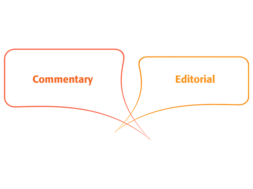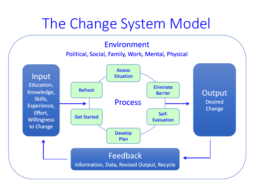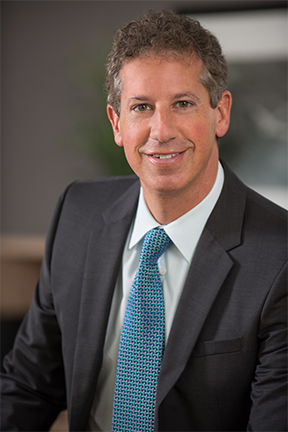
Reflections on the 90-10 Rule
By Marc Jerome, President, Monroe College
Even though the for-profit college sector has shrunk dramatically in the last few years, and recent data from the College Scorecard and other sources have demonstrated that issues such as high debt, low earnings, and low graduation rates – especially for low-income students – are endemic across higher education, there has been a renewed focus by many advocacy groups and some states to revisit the 90-10 rule and make it more punitive.
The regulation mandates that proprietary colleges receive no more than 90 percent of their revenues from Title IV federal student aid. The institution that I lead, Monroe College, has passed the 90-10 rule easily since its inception.
Recent proposals to make the 90-10 rule more punitive are disconcerting because they seem to be rooted in a philosophical opposition to for-profit education rather than protection for students.
Higher education policy should always put the best interests of students first. Recent calls to amend 90-10 to a new 80-20 ratio, and to include veterans’ benefits in the calculation, serve to do the opposite, especially where the institution is serving veterans and low-income students well.
The time has come to challenge the underlying philosophy behind 90-10 and consider modest changes that would transform a rule that is primarily punitive, to a rule that is constructive and encourages policies that help low-income students.
Challenging the philosophy of 90-10
The 90-10 rule has been framed as a consumer protection tool but it does nothing to advance student protections or assure quality outcomes. In fact, the rule is actually quite regressive and current proposals to tighten it to 80-20 are even more so.
All 90-10 does is require a for-profit educational institution to receive 10 percent of its revenue from sources other than Title IV. It does not reward institutions with strong student outcomes, nor does it punish those with weak outcomes. All the classic markers of quality – graduation rates, default rates, loan burdens, and earnings – are irrelevant to the 90-10 rule.
In fact, the 90-10 rule actually incentivizes colleges to focus on attracting wealthier students with the personal means to cover their tuition. Institutions that are located in low-income communities where wealthy students are scarce are incentivized to require students to make cash payments. This is not a progressive policy.
The rule becomes especially punitive at institutions like Monroe that are based in low-income communities and serve low-income students well. We are located in the poorest congressional district in the United States and, due to generous institutional aid programs, do not require most low-income students to make any out-of-pocket tuition payments. Indeed, nearly 90 percent of all high school students entering Monroe avoid taking out any student loans. More importantly, they finish their programs and graduate. Our impact on students’ social mobility was noted in The New York Times.1
Shockingly, the 90-10 rule punishes these kinds of programs and outcomes. It is hard to characterize higher ed policies that don’t support such outcomes as anything other than regressive. They are a step backward.
It is time to reset the national higher education accountability debate, which seems hopelessly stuck in familiar party tropes. The issue is timely as Congress is expected to take up the HEA, and a number of states across the country are discussing 90-10, despite the metric clearly being a federal issue.
The most common argument for the 90-10 rule is that the ability of an educational institution to attract revenue from private sources reflects the quality of the institution.2
The suggestion is that if an institution is unable to attract more than 10 percent of its revenue from a public source, ipso facto, it must be a low-quality institution.3
It raises the question: If the rule is really about rooting out low-quality institutions based on funding source ratios, what does this say about many public institutions? As others point out, the rule couldn’t be about quality since many public institutions would not pass the rule if all state and local aid was included.4
Some interest groups have argued: “To the extent that owners of schools are allowed to draw down funds from the U.S. Treasury under Title IV, it is on an exception basis: only when they can demonstrate that the program in which the eligible student is enrolled is worthy of federal funding because it prepares the student for ‘gainful employment in a recognized occupation.’”5 Surprisingly, these same groups advocate closure for institutions that do not pass 90-10, whose outcomes “are worthy of federal funding,” whether they “prepare students for gainful employment” or have stellar outcomes for low income students – including high graduation rates or low student debt. This is puzzling since federal education policy generally rewards strong outcomes for students. 90-10 is the exception.
When for-profit institutions can demonstrate that the program in which the eligible student is enrolled is worthy of federal funding, Title IV aid should not be withheld from students – regardless of what percentage of revenues their college attracts from non-public sources.
Tightening 90-10: Impact on affordability programs for low-income students
Let’s look at how proposed changes would play out at the institution I lead.
In 2016, Monroe College implemented two programs to improve college access, affordability, and attainment for public school students in New York. Three troubling local higher education trends drove us:
- Low graduation rates for students attending two-year degree programs;6
- Declining numbers of low-income students attending college in New York; and
- First-generation students’ difficulty transitioning from small, highly structured high schools to larger, less personal colleges.
The first program is our Presidential Partnership Program. It provides 1,000 New York students the opportunity to earn a bachelor’s degree with no student loan debt. The program has a goal of 70 percent on-time graduation rate for associate degrees, which the first Fall 2016 cohort exceeded. Prior to the implementation of the program, many of these same students would have made monthly cash payments or taken a student loan.
The second program is our Dreamer’s Initiative, which provides full or partial scholarships to undocumented students. There are 80 students currently pursuing their degree at Monroe through this program; they are on track to graduate at over 70 percent.
Both programs offer highly specialized support services and enrichment activities to help with students’ academic, personal, and social development. They are no longer sustainable under 80-20, which would force us to:
- Lower our institutional aid budget and require payment from students who are currently attending with no out-of-pocket costs;
- Abandon or reduce our long-time mission of effectively serving poor students who are unable to afford to pay;7
- Pursue higher income students or corporate partners who could pay tuition on behalf of students; and
- End our Dreamer’s Initiative, which invests $2 million dollars in institutional aid to fund undocumented students.
It is hard to argue that the students we serve would not be hurt by the above. Yet some place greater priority on punitive policies that seem aimed at punishing for-profit colleges rather than protecting students, promoting good outcomes, or ensuring colleges like Monroe don’t have to abandon their truly progressive programs. That should trouble us all.
How do we fix it? It starts with recognizing that an inability to attract non-public dollars does not automatically correlate with a lack of quality.
The federal government, like all custodians of public tuition assistance funds, should be concerned about its return on investment. Taxpayers should be as well. However, even if an institution receives 100 percent of its funding from public sources but graduates the highest percentage of students, with the fewest number of student debt problems, regulators and policymakers should embrace these outcomes, not threaten them.
New thinking on 90-10
To help transform the 90-10 rule from a punitive, regressive policy, to one that would encourage policies designed to help low income students, we propose that the rule be amended to recognize the benefit to students and higher education policy where Title IV funds are being used at a for-profit educational institution that is serving these students well.
For example, we would propose giving credit for institutions funding programs that permit students to attend without incurring any loan debt. The institution would receive credit for all Title IV dollars spent on students where they are funded sufficiently so no federal or private loan was required. This would address the issue of whether public institutions would pass a 90-10 rule that included all public aid.
The time is right to step away from the political rhetoric and repurpose the 90-10 rule so that it incentivizes for-profit institutions, especially where the evidence is clear that Title IV students are being served well.
Students deserve nothing less.
Resources
- https://www.nytimes.com/interactive/projects/college-mobility/monroe-college
- A recent Brookings report states, “The rule was intended to validate the quality of the education provided and the tuition price: if an institution is providing a valuable education, someone other than the federal government should be willing to pay for students to attend.” https://www.brookings.edu/research/does-the-90-10-rule-unfairly-target-proprietary-institutions-or-under-resourced-schools/
- One organization argues that “[f]or-profit colleges should not be funded solely by federal taxpayers, and federal taxpayers should not be propping up low-quality schools. If a college offers a quality education at a competitive price, someone other than the federal government, such as employers, scholarship providers or students, will be willing to pay for attendance at the school.” https://ticas.org/sites/default/files/pub_files/90-10_qa_0.pdf
- “Opponents of the 90/10 rule argue that the students at for-profit colleges are predominantly low-income students without the financial resources to cover 10% of the costs on their own…(and) that the rule does not correlate well with quality of the education. They also argue that most community colleges would not pass the 90/10 rule if they were subjected to the rule and state grants and appropriations were counted alongside federal student aid.” http://www.finaid.org/loans/90-10-rule.phtml
- https://tcf.org/content/commentary/federal-dollars-profit-colleges-must-remain-exception-not-rule/?session=1
- On-time graduation rates for two-year programs are as low as 3% and time and half graduation rates for Pell students, even at four year programs, can be below 10%.
- Monroe serves a high percentage of ZERO EFC students. The federal financial aid formula concludes that these students are unable to afford any family contribution.
MARC M. JEROME is the fourth president of Bronx-based Monroe College, a national leader in urban education that delivers some of the best outcomes in the country for first-generation urban students. He has played an integral role in leading the College for two and a half decades, serving as Executive Vice President for 22 years prior to his elevation to President in January 2017.
As part of the College’s work to improve college access, affordability, and outcomes for New York students, Mr. Jerome unveiled an innovative program three years ago that provides generous scholarships, as well as heightened academic support and personal mentorship to graduates of local high schools. Today, as a result of that initiative, the vast majority of the 1,000 students in the program – including 80 undocumented students – will graduate with zero tuition debt.
A seasoned educator and recognized expert on the impact of higher education policy on underrepresented student populations, Mr. Jerome has long championed students’ interests in Albany and Washington, DC. He has shared his perspectives on higher education policy and regulatory design with the White House, the Department of Education, the House Committee on Education and the Workforce, and NASFAA, among others, and provided counsel on fair and balanced solutions to achieve desired outcomes. Notably, he served on the U.S. Department of Education’s Gainful Employment Negotiated Rulemaking Committee in 2013-2014 and again in 2017-2018.
In 2018, he was appointed to the Board of Trustees of the Higher Education Services Corporation (HESC), following confirmation by the New York State Senate.
- Policy and practical expertise regarding Gainful Employment and Borrower Defense to Repayment
- Recognized expertise on college completion and student debt issues, particularly among low-income students
- National advocate for “skin in the game” proposals that improve student outcomes and institutional accountability
- National thought-leader regarding Cost of Attendance and Repayment Rates
- Extensive work with the NYC Board of Education, especially high schools serving low-income students
Contact Information: Marc M. Jerome // President // Monroe College // 914-740-6803 // mjerome@monroecollege.edu // monroecollege.edu // www.facebook.com/marc.jerome.9








